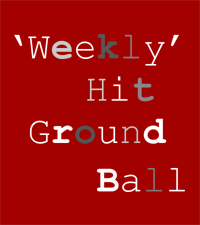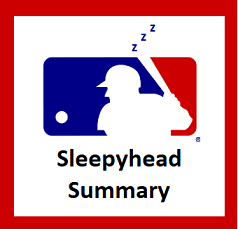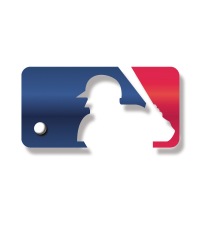
As the Thanksgiving weekend continues in the States, spare a thought for Jonathan Villar.
On the one hand it looks like he’s about to lose several million dollars; on the other it looks like this is because he’ll be cut by the Baltimore Orioles.
To give thanks or not to give thanks, that is the question.
Villar was one of the very few positives to come out of the Orioles’ dismal 2019 season. After being acquired in a trade with the Milwaukee Brewers at the 31 July 2018 deadline, he seemed to find some new life in Baltimore and put together a season this year that called to mind his 2016 campaign with the Brew Crew.
He kept producing whilst everything was going wrong around him, most notably in trading groundballs for flyballs. Looking at his batted ball percentages on Fangraphs, Villar went from 55.9% grounders and 24.4% flyballs in 2018 to 48.9% and 31.3% respectively whilst his line drive rate stayed almost exactly the same (19.7% then 19.8%).
With it came a career high in home runs (24) and also in strike-outs (176) and when you consider his base-running exploits (40, 3rd most in the Majors, but being caught 9 times) you get the sense that he thought, if the team’s going to lose anyway, he might as well get plenty of healthy hacks and take some chances on the basepads in for his own sake.
Villar’s problem is that he played well enough to earn a sizeable raise from his $4.8m salary of 2019 in his final year of salary arbitration. MLB Trade Rumors estimates that Villar would get in the region of $10.4m and the Orioles have no interest in paying him that much money.
In a familiar refrain from recent articles here, you can understand the logic from the cold financial perspective. Despite Villar’s contributions, the Orioles still lost 108 games in 2019. To put it flippantly, they will still be perfectly capable of losing 100+ games in 2020 without Villar so why not save the money?
It would be more palatable if Baltimore had been able to find a trade partner for Villar’s services, as they attempted in recent weeks, as that way the player would still get his arbitration-driven salary and the Orioles could at least justify it as a baseball decision. However, the route they are now taking really has nothing to do with baseball.
As Baltimore couldn’t find a trade partner, their options were to keep hold of a good MLB player and look to trade him in the months ahead as new opportunities emerged (e.g. as a result of injuries on other teams) or to simply decide they’re not interested in having to pay a good MLB player a good MLB player-type salary and to get rid of him.
Villar is not an ex-Oriole just yet, he’s currently been put on waivers so that other teams can make a claim for him, although the most likely way it will play out is that he’ll become a free agent. In fairness to Baltimore, their reluctance to pay Villar $10m+ obviously is shared by other teams and reflects his season-on-season inconsistency, but looking at the situation from some other perspectives does once again turn the attention back to the non-competitive landscape in MLB right now.
The Orioles will have significant revenue coming into their coffers, in particular from local and national TV deals, regardless of how bad their team is in 2020. There is no threat of relegation or incentive to finish higher up in the standings (e.g. prize money based on your win-loss record), you can be as terrible as you like and still reap the rewards.
Where their bottom line is affected is in game-day revenue. Funnily enough, getting anyone beyond the die-hard loyal fans into the ballpark when you’re not fielding a competitive team is somewhat tricky.
In 2019, only the two Florida teams got fewer fans through the turnstiles. Baltimore drew 1,307,807 over 80 home games (16,347 average). That has been part of a downward slide in attendance as the team has racked up losses in recent years. In 2016 the Orioles earned a Wild Card with an 89-73 record and placed 20th in MLB in attendance at 2,172,344, an average of 26,819 in the 81 home games played. In 2017, Baltimore slipped to 23rd (2,028,424 total, 25,042 average), then to 26th in 2018 (1,564,192, 20,053 – technically only playing 78 home games with 3 single-ticket double-headers).
Put it together and across the four seasons the Orioles have seen their average attendance drop by 10,500, with approximately 800,000 fewer ticket sales.
Again, their low attendances in 2019 came despite the likes of Villar playing well and one or two players of that ilk are not going to make a huge difference to whether a family decides to spend some of their hard-earned money going to Camden Yards. Yet, there is a difference between making a few individual player decisions like this and taking an overall decision essentially not to bother even trying to put a watchable team out on the field for seasons on end.
You can also look at it from Villar’s point of view. He was traded to Baltimore without any say in the matter. We can’t replay the season and see what might have happened had he gone to a team that was competitive in 2019, maybe he wouldn’t have got to play so regularly, but if he had performed like this on a team more in the play-off mix then they likely would accept paying him the money to keep him around for 2020.
It’s one of the curious aspects of how MLB works that players are locked into the system, through their initial 6 MLB seasons at least, and their fate is not just determined by their performances but on which team they end up on.
We’ll see where Villar ends up next and what he makes of the opportunity that comes his way, but what we don’t need to wait for is an assessment on what it means for Baltimore’s approach. Whilst MLB Commissioner Rob Manfred does not like it being put to him that teams aren’t trying to win, it’s hard to argue with the claim when teams so blatantly show that they have no interest in paying for Major League talent.



